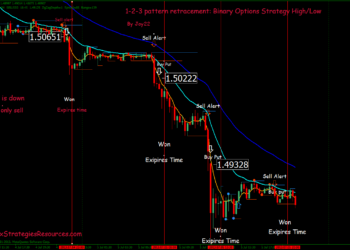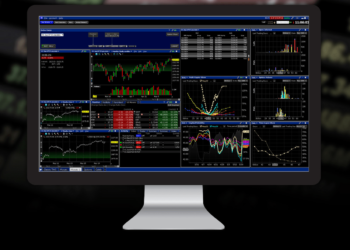If you’ve ever watched an episode of the famous stock market show “Mad Money,” then you know how exciting trading stocks can be. It also looks like a quick way to strike it rich. And while there are fortunes to be made in trading stocks and other securities, it is not as simple as watching Jim Cramer give one company a buy and another a sell.
Fortunately, with some education, practice and perseverance, anyone can learn how to trade stocks for profit. It just isn’t quite so simple as changing your hat from blue to green or vice versa. But with the help of this article, you should have all the information you need to get started selling stocks for a living – or at least begin down that road.
Know Your Terminology
Before you start, you must first know all of the terminology associated with trading. Your ability to use and understand the terminology of the stock market will greatly increase your chances of success. Ask yourself these questions: – What is a buy and sell order? – What is an order execution price? – What is an average daily volume? – What is a tick chart? – What is a bid and ask? – What is a bid and ask spread? – What is the bid-ask bounce? – What is a contract? – What is an opening (and closing) price? If you don’t know the answers to these questions, you need to start reading up on them. The more you know, the better your chances of success.
What You Need to Trade Stocks for a Living
First and foremost, you need to have a sizable amount of money to invest. While there are ways to trade stocks for a living with little money, it isn’t easy. Typically, you’ll need a few thousand dollars (or more) to get started. Next, you need to have patience. No one makes a fortune overnight. Successful trading takes time, and even then, you can’t expect to hit the jackpot every time out. It is a business, and like any other business, you will have some wins and some losses. Finally, you need to have the right tools. You can’t expect to be successful trading stocks without a proper broker or trading platform. You need to find a broker that offers the tools you need – and only then will you be ready to start trading stocks for a living.
Step 1: Determine Your Strategy
Before you start trading stocks, you must know what you’re doing. You need to have a strategy in place that tells you the best times to buy and sell stocks. You also need to know when to ignore your strategy and just walk away. Ideally, this strategy should be based on technical analysis, fundamental analysis or a combination of both. With technical analysis, you are attempting to forecast future price movements based on past price movements – including volume, open interest, past patterns, moving averages and more. With fundamental analysis, you are attempting to forecast future price movements based on company earnings, revenues, expenses, dividends, etc.
Step 2: Find the Right Broker for You
Once you’ve determined the type of trading strategy you want to employ, you have to find the right broker. The broker you choose will have a direct effect on how much you make (or lose) when trading stocks. You’ll want a broker that offers low trading costs and reasonable fees. You’ll want a broker that offers access to reliable market data and charting software. You’ll want a broker that offers a wide selection of trading securities and other assets to choose from. You’ll want a broker that offers reasonable withdrawal and deposit times. You’ll want a broker that offers reasonable margin rates and leverage. You’ll want a broker that offers reasonable trading hours. You’ll want a broker that offers reasonable regulatory authority (FINRA, ASIC, etc.). You’ll want a broker that offers reasonable security and privacy. It will take some time to find the right broker for you, but it is well worth the effort. It will determine to a large degree how much you make (or lose) when trading stocks.
Step 3: Select the Right Securities to Trade
Once you have a reliable broker, you then have to find the right securities to trade. This is an important step that many beginning traders overlook. It is not about finding the highest-yielding securities; it is about finding the securities that fit into your trading strategy. You do not want to trade just any security; you want to trade securities that fit into your strategy. You do not want to trade in too many securities at once; you want to trade in just a few. It is a balancing act that all traders must master. Once you have determined which securities to trade, you must then decide how many of each security to trade. You must determine how much capital you want to risk per trade. If you risk too much per trade, you risk going broke. If you risk too little per trade, you risk never making a profit. It is a balancing act that all traders must master.
Step 4: Trade and Track Your Progress
Once you are actively trading securities, you must track your progress. This is where many traders fail. They start trading and then do nothing but stare at their computer until the market closes. They do not review their trading decisions. They do not try to improve their trading decisions. They do nothing but watch their money disappear. If you want to trade stocks for a living, you must do more than just stare at a computer screen. You must review your trading decisions. You must try to improve your trading decisions. You must track your progress to determine if your trading strategies are profitable or not. You must never stop learning and improving until you are making significant profits over a significant period of time. Only then can you consider yourself to be a successful trader.
Bottom Line
Trading stocks for a living is not easy. It is not quick. It is not a get-rich-quick scheme. It takes time and effort. It takes patience and perseverance. It takes discipline and a willingness to learn from your mistakes. It is not for everyone. But for those who are prepared to put in the work, it is an excellent way to make a living.






